Suicide rates in the Armed Forces have been on a steady incline for the past several years, and military leaders are struggling to change long-standing mentalities to try and get help for troops in need.
“It’s an area that can’t get enough focus right now,” said Adm. Mike Mullen, the chairman of the Joint Chiefs of Staff to the American Forces Press Service on Sept. 10. “When we’re losing as many lives as we are, it is a crisis we have to continue to address.”
The suicide rates of the Army and Marine Corps surpassed the civilian rate in 2008. There were 309 suicides in the Armed Forces in 2009, with a rate between 2005 and 2009 of around one suicide every 36 hours, according to a Defense Department task force, the American Forces Press Service reported.
Part of the problem is an established culture of not admitting to mental health issues in the military, which only began to change a few years ago. The Army, in particular, is currently trying to “reduce the stigma long associated with asking for help,” said Army spokesman at the Pentagon George Wright.
“For many, many years—particularly during the Cold War—there was a question in the security clearance form that had to do with whether or not a soldier had recently asked for help for any mental health issues,” Wright said.
The mental health issues question in the security clearance form included a broad range of problems ranging from clinical depression to alcohol abuse and anxiety.
Many members of the Army were reluctant to admit to such problems due to that question, “and there was a great and widespread concern that the security clearance would then be lifted, and hence, their promotion potential would be damaged,” Wright said.
The question on mental health issues was eliminated around 2007, according to Wright, and signified a change in the military’s perception of mental health issues, yet the military is still trying to fully eliminate the stigma.
The Army is “a very gung-ho, can-do organization that prides itself on mission accomplishment,” and at times when a soldier asks for help, other troops have the tendency to question his or her “effectiveness as a soldier,” Wright said.
He was quick to add that the mentality of questioning a soldier based on mental health issues is currently a problem more defined among troop peers and junior leaders. “The Army leadership is fully behind the notion of reducing stigma for behavioral health issues,” he said.
All branches of the military have implemented programs on suicide prevention and education. Last month was suicide prevention month, and the Armed Forces carried the theme: “Shoulder to Shoulder: I will never quit on life.”
“It’s an area that can’t get enough focus right now,” said Adm. Mike Mullen, the chairman of the Joint Chiefs of Staff to the American Forces Press Service on Sept. 10. “When we’re losing as many lives as we are, it is a crisis we have to continue to address.”
The suicide rates of the Army and Marine Corps surpassed the civilian rate in 2008. There were 309 suicides in the Armed Forces in 2009, with a rate between 2005 and 2009 of around one suicide every 36 hours, according to a Defense Department task force, the American Forces Press Service reported.
Part of the problem is an established culture of not admitting to mental health issues in the military, which only began to change a few years ago. The Army, in particular, is currently trying to “reduce the stigma long associated with asking for help,” said Army spokesman at the Pentagon George Wright.
“For many, many years—particularly during the Cold War—there was a question in the security clearance form that had to do with whether or not a soldier had recently asked for help for any mental health issues,” Wright said.
The mental health issues question in the security clearance form included a broad range of problems ranging from clinical depression to alcohol abuse and anxiety.
Many members of the Army were reluctant to admit to such problems due to that question, “and there was a great and widespread concern that the security clearance would then be lifted, and hence, their promotion potential would be damaged,” Wright said.
The question on mental health issues was eliminated around 2007, according to Wright, and signified a change in the military’s perception of mental health issues, yet the military is still trying to fully eliminate the stigma.
The Army is “a very gung-ho, can-do organization that prides itself on mission accomplishment,” and at times when a soldier asks for help, other troops have the tendency to question his or her “effectiveness as a soldier,” Wright said.
He was quick to add that the mentality of questioning a soldier based on mental health issues is currently a problem more defined among troop peers and junior leaders. “The Army leadership is fully behind the notion of reducing stigma for behavioral health issues,” he said.
All branches of the military have implemented programs on suicide prevention and education. Last month was suicide prevention month, and the Armed Forces carried the theme: “Shoulder to Shoulder: I will never quit on life.”
An educational video on suicide prevention by the same name was also released, outlining some of the military’s key points in stopping suicides—getting troops and leaders to watchout for others. One story in the video is of a serviceman who tried shooting himself, only to find that a concerned friend and fellow serviceman took the firing pin from his gun, saving his life.
Preventing Suicide
Suicide rates in the Armed Forces were traditionally much lower than those of civilians. The Army and Marine Corps only recently exceeded the civilian suicide rate. Although suicides in the Navy and Air Force have increased slightly, they still remain much lower than the civilian rate.
“The Army and Marine Corps, which have borne the majority of ground combat operations, have had the greatest increase,” according to a recent Army report.
Civilian suicide rates have stayed around 20 per 100,000. In 2001, the Army’s suicide rate per 100,000 was nine—less than half that of the civilian rate. It began a steady increase from 2004 and surpassed the civilian rate in 2008 when the number reached 20.2.
The Marine Corps has fluctuated over the years, yet remained below the civilian rate until around the same time as the Army, in 2008. It began a steady incline from 2006, and is currently at 24 per 100,000.
Suicides in the Navy and Air Force still remain low, and have only increased slightly. Both remain around the 12 per 100,000 mark.
The most common stresses found among troops who commit suicide are relationship problems, financial problems, and pending disciplinary action, according to Wright.
According to an Army report, for suicides, “The most prevalent individual stressor indicated was relationship problems,” which were found in 58 percent of troop suicides in 2009.
Gen. Peter W. Chiarelli visited six military bases to create a 2010 report on prevention of troop suicide. “The result of that eye-opening experience prompted an Army campaign to rebalance health promotion, risk reduction, and suicide prevention programs and services,” Chiarelli said in the report.
“What we witnessed firsthand were real indicators of stress on the force and an increasing propensity for soldiers to engage in high risk behavior,” he said.
In regard to the rise in suicides, Chiarelli said, “These are not just statistics; they are our soldiers,” adding that “The good news is that soldiers are seeking behavioral health care in record numbers with over 225,000 behavioral health contacts, indicating that our efforts to emphasize the importance of behavioral health are working.”
Preventing Suicide
Suicide rates in the Armed Forces were traditionally much lower than those of civilians. The Army and Marine Corps only recently exceeded the civilian suicide rate. Although suicides in the Navy and Air Force have increased slightly, they still remain much lower than the civilian rate.
“The Army and Marine Corps, which have borne the majority of ground combat operations, have had the greatest increase,” according to a recent Army report.
Civilian suicide rates have stayed around 20 per 100,000. In 2001, the Army’s suicide rate per 100,000 was nine—less than half that of the civilian rate. It began a steady increase from 2004 and surpassed the civilian rate in 2008 when the number reached 20.2.
The Marine Corps has fluctuated over the years, yet remained below the civilian rate until around the same time as the Army, in 2008. It began a steady incline from 2006, and is currently at 24 per 100,000.
Suicides in the Navy and Air Force still remain low, and have only increased slightly. Both remain around the 12 per 100,000 mark.
The most common stresses found among troops who commit suicide are relationship problems, financial problems, and pending disciplinary action, according to Wright.
According to an Army report, for suicides, “The most prevalent individual stressor indicated was relationship problems,” which were found in 58 percent of troop suicides in 2009.
Gen. Peter W. Chiarelli visited six military bases to create a 2010 report on prevention of troop suicide. “The result of that eye-opening experience prompted an Army campaign to rebalance health promotion, risk reduction, and suicide prevention programs and services,” Chiarelli said in the report.
“What we witnessed firsthand were real indicators of stress on the force and an increasing propensity for soldiers to engage in high risk behavior,” he said.
In regard to the rise in suicides, Chiarelli said, “These are not just statistics; they are our soldiers,” adding that “The good news is that soldiers are seeking behavioral health care in record numbers with over 225,000 behavioral health contacts, indicating that our efforts to emphasize the importance of behavioral health are working.”
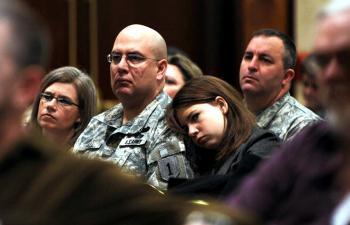

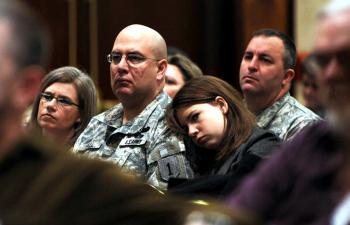
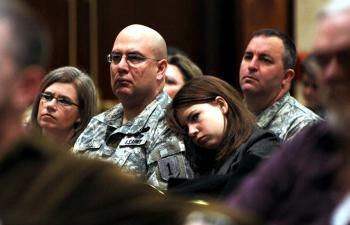
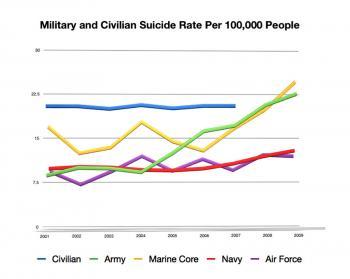
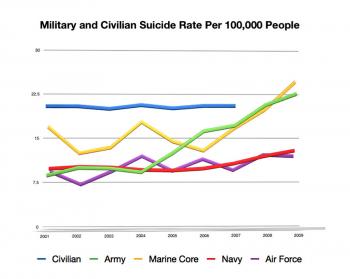
![[LIVE Q&A 04/19 at 10:30AM ET] Major Case Could Overturn Jan. 6 Charges](/_next/image?url=https%3A%2F%2Fimg.theepochtimes.com%2Fassets%2Fuploads%2F2024%2F04%2F18%2Fid5632533-CR-TN_REC_0419-1080x720.jpg&w=1200&q=75)
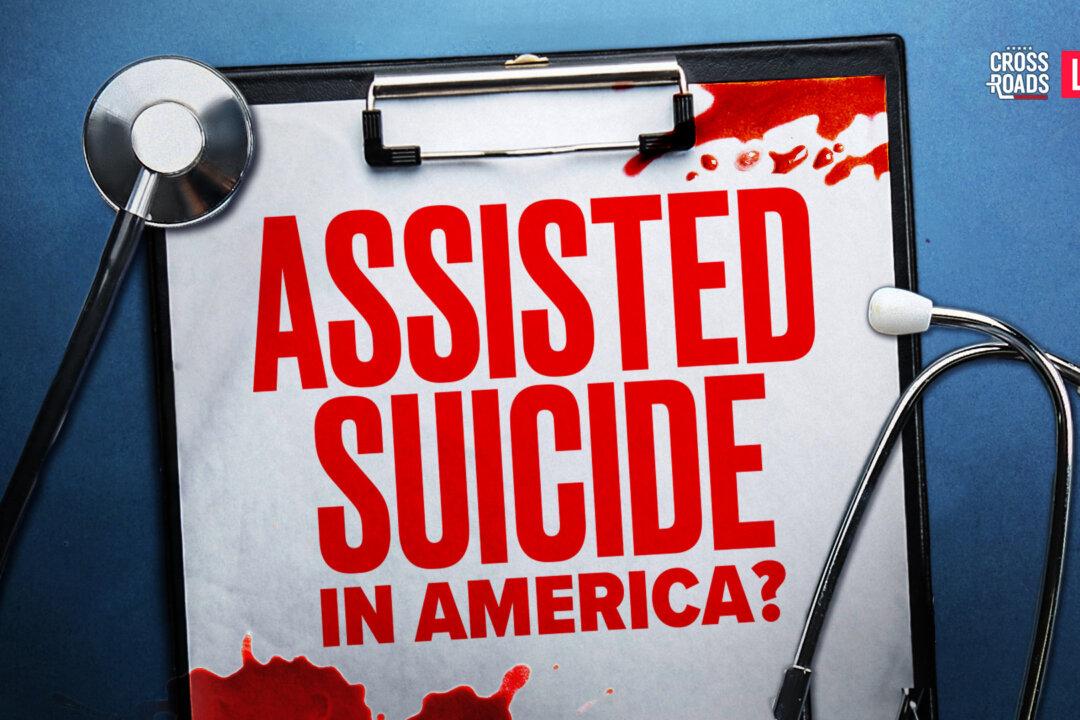
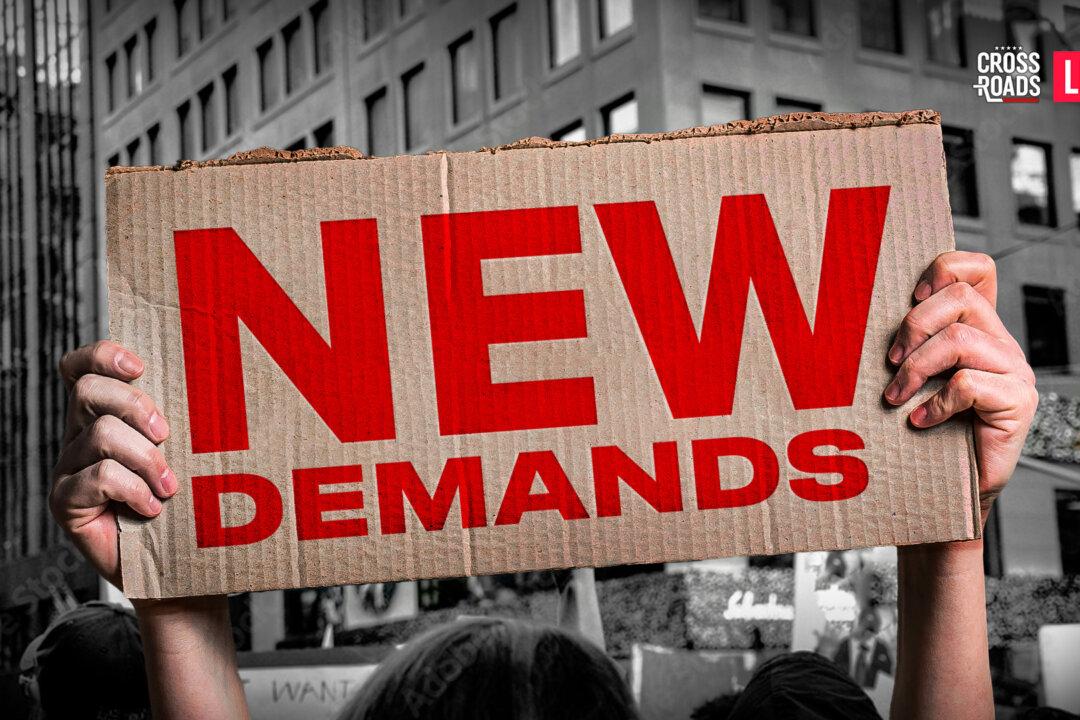

Friends Read Free